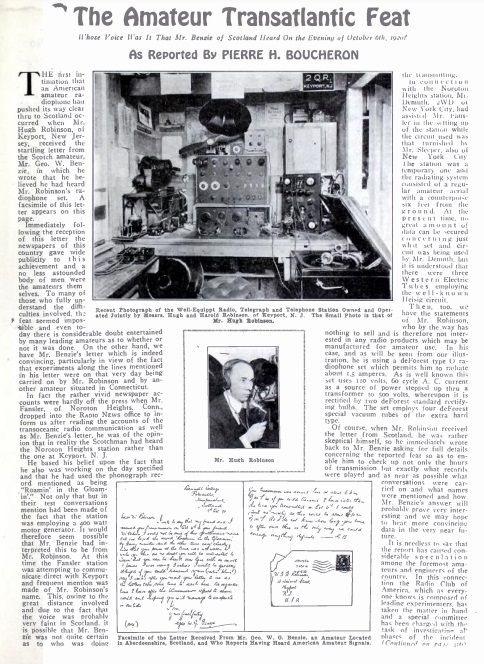Today marks the 99th anniversary of the ARRL Transatlantic Tests. On that date, the signal from 1BCG in Greenwich, Connecticut, was heard in Androssan, Scotland, the first successful Transatlantic transmission on shortwave frequencies.
But a hundred years ago this month, the December 1920 issue of Radio News reported the Transatlantic reception of the signals of 2QR, the station of brothers Hugh and Harold H. Robinson of 13 Walnut Street, Keyport, NJ.
The signals were allegedly heard in Scotland by amateurs George Benzie and James Miller, who reported hearing voice, phonograph records, and the 2QR call sign. The letter received from Scotland is shown in the magazine. The magazine did report that “even today there is considerable doubt entertained by many leading amateurs as to whether or not it was done.” When the issue went to press, the American amateurs had written to Scotland seeking more details, such as the exact time of the transmission and the records heard.
It turns out that the signals had not been received. In January 1922, QST carried the results of an investigation carried out by a committee of the Radio Club of America, headed up by Edwin Armstrong (one of the principals of the successful 1921 test), who concluded that the signals were not heard in Scotland. Apparently, the follow up from Scotland reported reception at a time when 2QR had not been on the air.
The RCA report did conclude that the Robinsons had acted in good faith. It was silent as to whether the committee believed that Benzie and Miller had, indeed, heard something.

